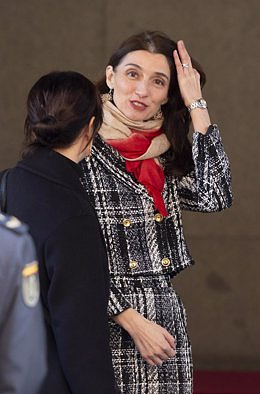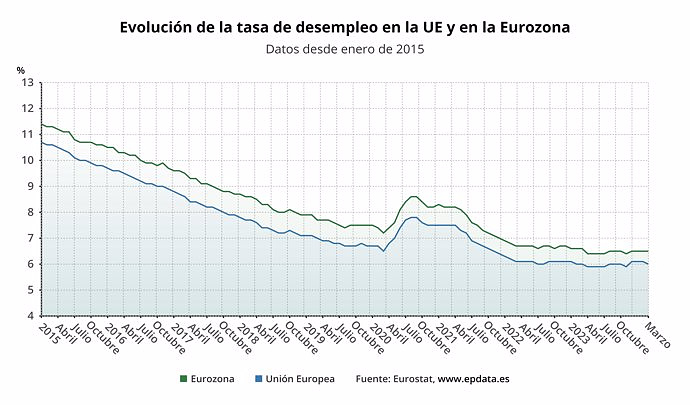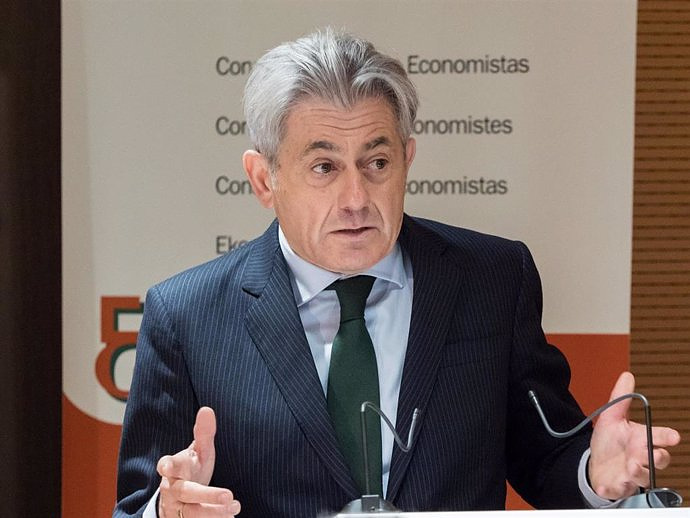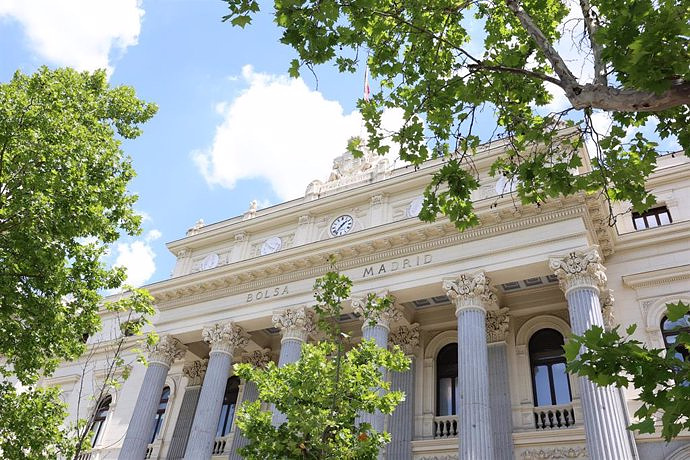Llop's department reports that it has taken down the pictures of eight other ministers from the dictatorship stage
MADRID, 18 Ene. (EUROPA PRESS) -
The Ministry of Justice has finally decided not to remove from its headquarters the portrait of the former Minister of Justice, Antonio Garrigues Díaz-Cañabate, in the first Government of Carlos Arias Navarro after the death of the dictator Francisco Franco. And this despite the fact that his portrait was one of those initially included in the list of Francoist vestiges to be removed in application of the Democratic Memory Law.
That initial list is contained in a Justice resolution, to which Europa Press has had access, in which Pilar Llop's department responded to a question made through the Transparency Portal about the cost of removing elements and vestiges of Francoism since the regulation was approved, its new location and in whose custody it was.
Justice explained that in addition to the portrait of Garrigues, who was ambassador to the US and to the Holy See during the dictatorship, the portraits of eight other former ministers had also been removed from their headquarters on Calle San Bernardo, stating that they held that position during the dictatorship Francoist.
Specifically, they were referring to Tomás Domínguez Arévalo, Count of Rodezno and Prime Minister of Justice during the dictatorship; Esteban from Bilbao and Eguía; Eduardo Aunós Pérez; Raimundo Fernandez-Cuesta Merelo; Antonio Iturmendi Banales; Antonio Maria de Oriol y Urquijo; Francisco Ruiz Jarabo; Antonio Garrigues and Diaz-Cañabate; and José María Sánchez Ventura, the last Minister of Justice of the dictatorship and who accredited Franco's death on November 20, 1975 as Notary Mayor of the Kingdom.
To these names, the person responsible for signing the resolution, the undersecretary Ana Sánchez Hernández, added that of the former minister Landelino Lavilla, although ministerial sources have indicated to Europa Press that it was due to an error and that the painting is still hanging in Justice, as than that of Garrigues.
These same sources point out that Llop's department has been one of the standard-bearers in the removal of vestiges and that it has been decided that the pictures of the ministers who arrived at the Ministry after Franco's death on November 20, 1975 should not be removed from the walls because although they did not hold that position in a democracy, they consider that they contributed to laying the pillars of it.
It so happened that the Minister of the Presidency, Relations with the Parliament and Democratic Memory, Félix Bolaños, justified this Wednesday the withdrawal of the portrait of Garrigues because these "gestures" serve to remind that Spain had "a black period" of a dictatorship and thus recognize the people who during that period fought for democracy and to regain freedom.
Since the question to the Transparency Portal did not focus on when they were withdrawn, it has only transpired that all of them remain stored in the Ministry itself, and that their removal has not entailed any cost to the public coffers.
The resolution also reports that, by virtue of the agreements adopted in February 2010 by the Technical Commission of Experts of the Memory Law, pre-constitutional shields were also dismantled in judicial buildings in Cáceres and Salamanca.
And he points out that they were transferred to the Provincial Archaeological Museum of Cáceres and Salamanca, respectively, the cost of the action in the judicial building of Salamanca being 37,503.89 euros and, in the case of Cáceres, since its disassembly was carried out within a joint action on the façade of the court building, there is no detailed cost thereof.
He points out that actions have also been carried out on decorative elements in the Provincial Court of Badajoz, in the Provincial Court of Palencia and in the Provincial Court of Zamora. But he adds that there is no information regarding the cost of its execution.

 Exploring Cardano: Inner Workings and Advantages of this Cryptocurrency
Exploring Cardano: Inner Workings and Advantages of this Cryptocurrency Seville.- Economy.- Innova.- STSA inaugurates its new painting and sealing hangar in San Pablo, for 18 million
Seville.- Economy.- Innova.- STSA inaugurates its new painting and sealing hangar in San Pablo, for 18 million Innova.- More than 300 volunteers join the Andalucía Compromiso Digital network in one month to facilitate access to ICT
Innova.- More than 300 volunteers join the Andalucía Compromiso Digital network in one month to facilitate access to ICT Innova.-AMP.- Ayesa acquires 51% of Sadiel, which will create new technological engineering products and expand markets
Innova.-AMP.- Ayesa acquires 51% of Sadiel, which will create new technological engineering products and expand markets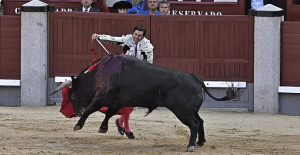 The Community will provide facilities and support to the Bullfighting Prize with the help of the Toro de Lidia Foundation
The Community will provide facilities and support to the Bullfighting Prize with the help of the Toro de Lidia Foundation Page will contact the bullfighting sector to create, from C-LM, Bullfighting Awards that will have national reach
Page will contact the bullfighting sector to create, from C-LM, Bullfighting Awards that will have national reach Urtasun, on eliminating the National Bullfighting Award: "The majority of Spaniards support the decision I have made"
Urtasun, on eliminating the National Bullfighting Award: "The majority of Spaniards support the decision I have made"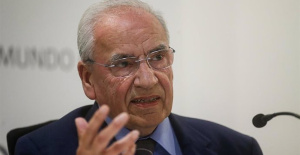 Alfonso Guerra sees Sánchez in an "autocratic" drift and accuses him of generating division "between the two Spains"
Alfonso Guerra sees Sánchez in an "autocratic" drift and accuses him of generating division "between the two Spains" How Blockchain in being used to shape the future
How Blockchain in being used to shape the future Not just BTC and ETH: Here Are Some More Interesting Coins Worth Focusing on
Not just BTC and ETH: Here Are Some More Interesting Coins Worth Focusing on The Generalitat calls for aid worth 4 million to promote innovation projects in municipalities
The Generalitat calls for aid worth 4 million to promote innovation projects in municipalities UPV students design an app that helps improve the ventilation of homes in the face of high temperatures
UPV students design an app that helps improve the ventilation of homes in the face of high temperatures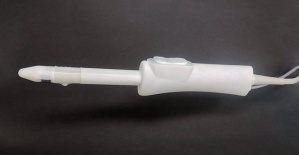 Ivace and promotes a less invasive device for the early detection of prostate cancer
Ivace and promotes a less invasive device for the early detection of prostate cancer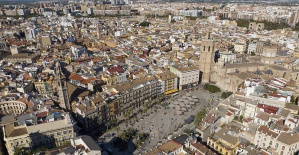 Valencia unanimously approves the ordinance to allocate spaces to test innovative initiatives
Valencia unanimously approves the ordinance to allocate spaces to test innovative initiatives A million people demonstrate in France against Macron's pension reform
A million people demonstrate in France against Macron's pension reform Russia launches several missiles against "critical infrastructure" in the city of Zaporizhia
Russia launches several missiles against "critical infrastructure" in the city of Zaporizhia A "procession" remembers the dead of the Calabria shipwreck as bodies continue to wash up on the shore
A "procession" remembers the dead of the Calabria shipwreck as bodies continue to wash up on the shore Prison sentences handed down for three prominent Hong Kong pro-democracy activists
Prison sentences handed down for three prominent Hong Kong pro-democracy activists ETH continues to leave trading platforms, Ethereum balance on exchanges lowest in 3 years
ETH continues to leave trading platforms, Ethereum balance on exchanges lowest in 3 years Investors invest $450 million in Consensys, Ethereum incubator now valued at $7 billion
Investors invest $450 million in Consensys, Ethereum incubator now valued at $7 billion Alchemy Integrates Ethereum L2 Product Starknet to Enhance Web3 Scalability at a Price 100x Lower Than L1 Fees
Alchemy Integrates Ethereum L2 Product Starknet to Enhance Web3 Scalability at a Price 100x Lower Than L1 Fees Mining Report: Bitcoin's Electricity Consumption Declines by 25% in Q1 2022
Mining Report: Bitcoin's Electricity Consumption Declines by 25% in Q1 2022 Oil-to-Bitcoin Mining Firm Crusoe Energy Systems Raised $505 Million
Oil-to-Bitcoin Mining Firm Crusoe Energy Systems Raised $505 Million Microbt reveals the latest Bitcoin mining rigs -- Machines produce up to 126 TH/s with custom 5nm chip design
Microbt reveals the latest Bitcoin mining rigs -- Machines produce up to 126 TH/s with custom 5nm chip design Bitcoin's Mining Difficulty Hits a Lifetime High, With More Than 90% of BTC Supply Issued
Bitcoin's Mining Difficulty Hits a Lifetime High, With More Than 90% of BTC Supply Issued The Biggest Movers are Near, EOS, and RUNE during Friday's Selloff
The Biggest Movers are Near, EOS, and RUNE during Friday's Selloff Global Markets Spooked by a Hawkish Fed and Covid, Stocks and Crypto Gain After Musk Buys Twitter
Global Markets Spooked by a Hawkish Fed and Covid, Stocks and Crypto Gain After Musk Buys Twitter Bitso to offset carbon emissions from the Trading Platform's ERC20, ETH, and BTC Transactions
Bitso to offset carbon emissions from the Trading Platform's ERC20, ETH, and BTC Transactions Draftkings Announces 2022 College Hoops NFT Selection for March Madness
Draftkings Announces 2022 College Hoops NFT Selection for March Madness